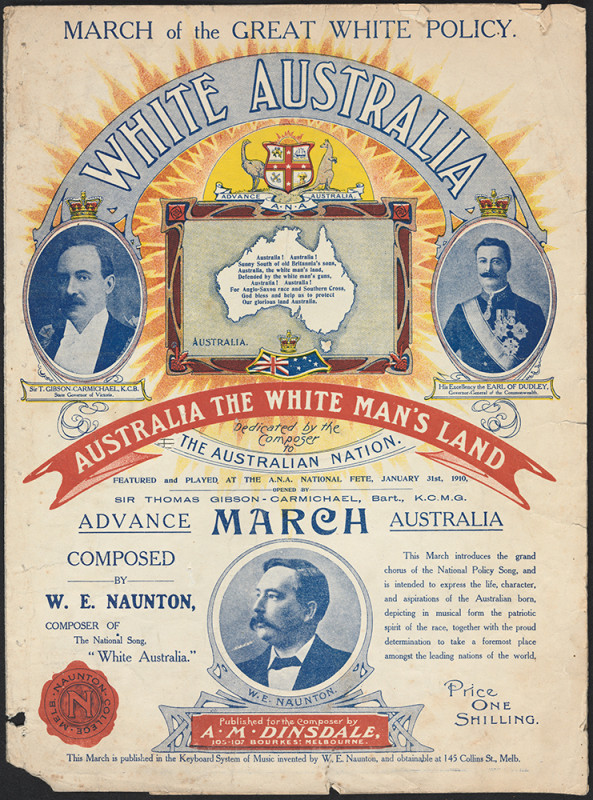Immigration Restriction Act 1901
23 October 1901
The new Australian Parliament outlines their vision for a white Australia in the Immigration Restriction Act 1901.
One of the first laws passed by the Australian Parliament was the Immigration Restriction Act 1901. It was the foundation of the White Australia Policy, a group of laws designed to prevent non-European migration to Australia. The policy aimed to define Australia as a white nation. It influenced Australian immigration for the next 70 years.
The Act drew on immigration restrictions from the colonial parliaments and expressed underlying racist attitudes. Concerns about the development of a low-paid underclass of migrant workers, which was feared would reduce wages for all, added support for the policy. The Act also served to keep a range of ‘undesirable’ people, not just non-white people, out of the country. A dictation test of 50 words was used as a way to control who could enter Australia. This test was designed to be very difficult, making it hard for many people, especially those from non-European countries, to pass.
The Immigration Restriction Act 1901 was repealed in 1958.

White Australia: March of the Great White Policy, W. E. Naunton
National Library of Australia, MUS N mba 786.21599 N312
White Australia: March of the Great White Policy, W. E. Naunton

National Library of Australia, MUS N mba 786.21599 N312
Description
An old, yellowed paper showing the cover of a musical composition called 'White Australia: March of the Great White Policy' composed by W E Naunton.
The cover has the Australian coat of arms with the words 'Advance Australia' and 'A.N.A'. Below the coat of arms is an outline of Australia containing the lyrics of the song. In the background is a blazing sun. The portraits of Sir T Gibson-Carmichael, State Governor of Victoria and the Earl of Dudley, Governor-General of the Commonwealth are on either side of the page and a portrait of the composer is featured at the bottom of the page.
A description of the music is in the bottom right corner of the page – 'This March introduces the grand chorus of the National Policy Song, and is intended to express the life, character, and aspirations of the Australian born, depicting in musical form the patriotic spirit of the race, together with the proud determination to take a foremost place amongst the leading nations of the world.'
You may save or print this image for research and study. If you wish to use it for any other purposes, you must declare your Intention to Publish.